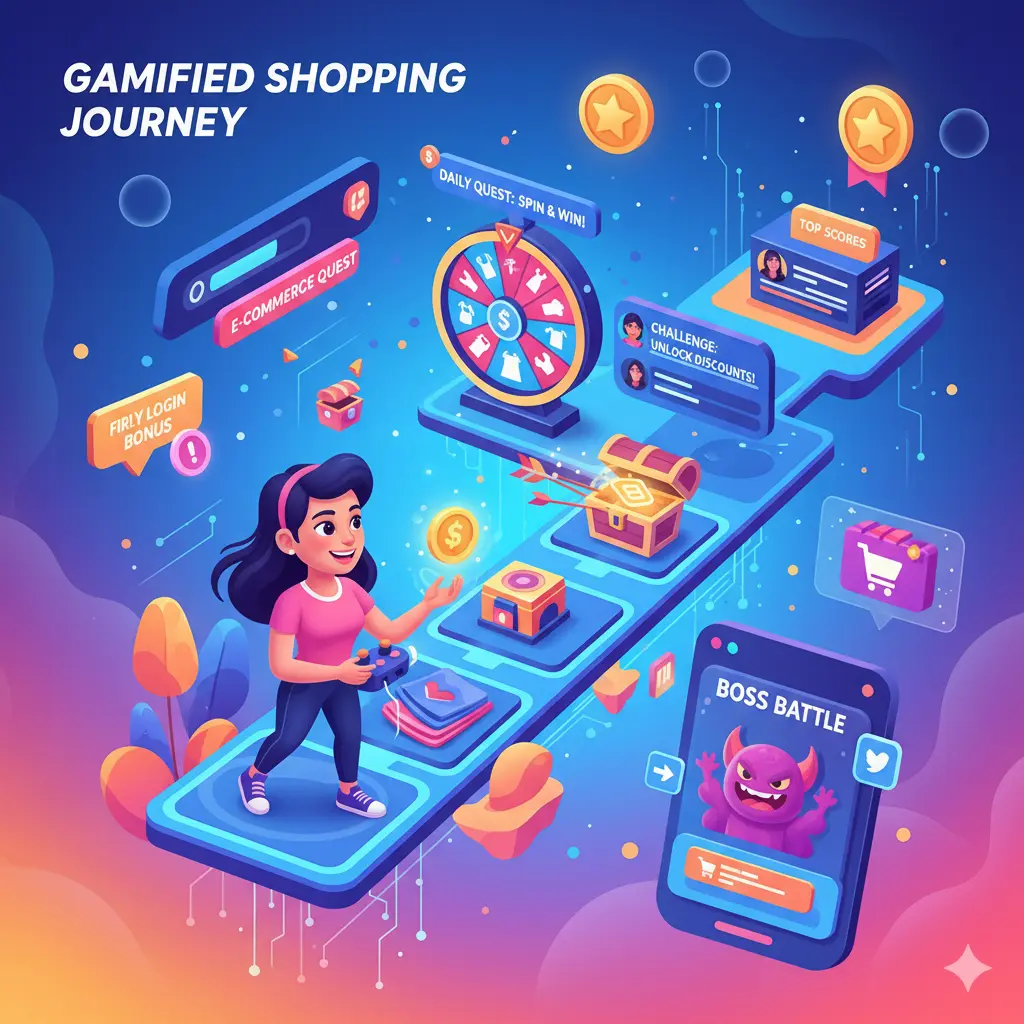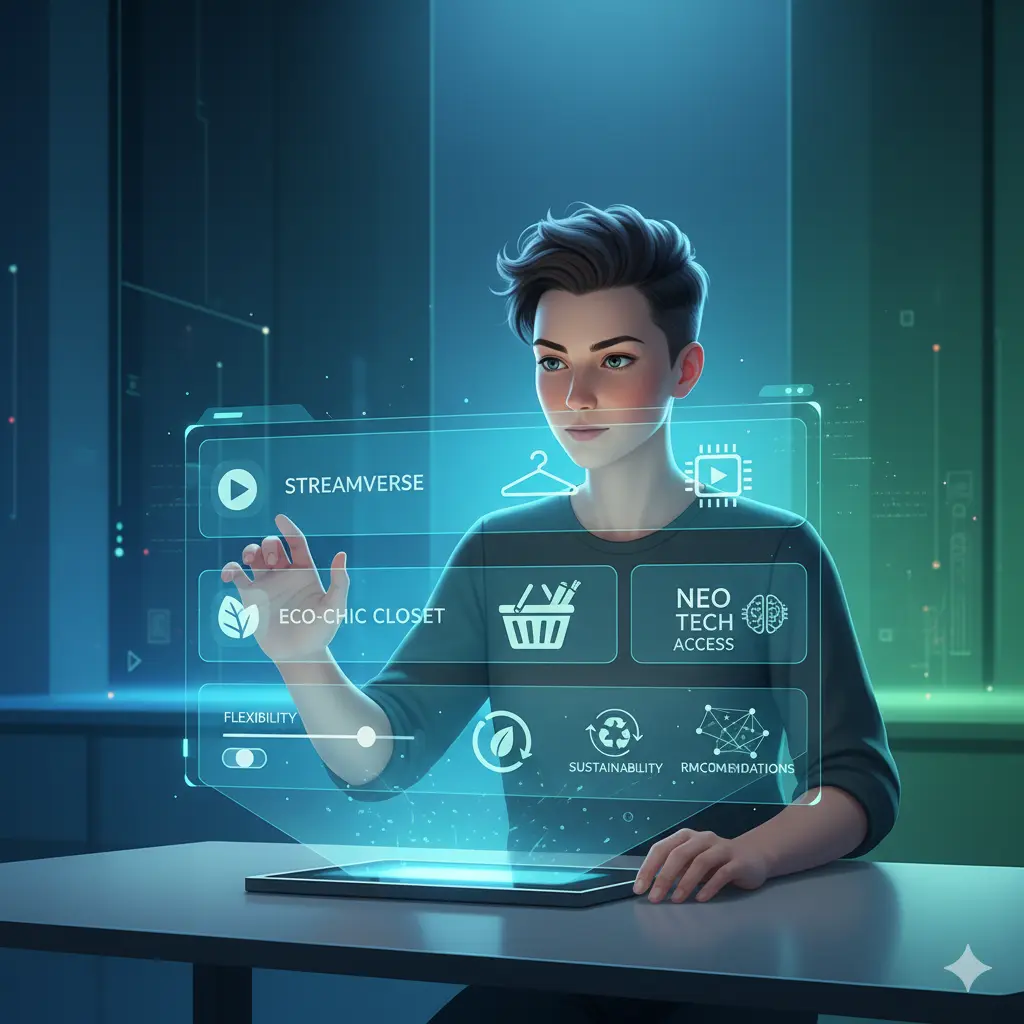The Rise of Entertainment Commerce
E-commerce is no longer just about convenience and transactions — it’s about creating experiences. In today’s digital world, where customers are bombarded with choices, gamified shopping journeys are emerging as one of the most powerful ways to engage, entertain, and retain consumers. Gamification transforms online shopping from a passive activity into an interactive adventure — making customers feel like players in a rewarding game rather than just shoppers.
This new trend, often called “shoppertainment” or entertainment commerce, is reshaping the landscape of digital retail. By blending game mechanics such as rewards, levels, points, badges, and challenges into online shopping, brands are making the experience more immersive and emotionally engaging. It’s no longer about what customers buy, but how they feel while buying it.
Understanding Gamified Shopping
Gamification in e-commerce means applying elements from video games — like challenges, leaderboards, and achievements — to the shopping process. The goal is to trigger intrinsic motivation, such as curiosity, competition, and satisfaction. Instead of scrolling through endless product listings, customers participate in mini-games, spin virtual wheels, complete missions, or unlock discounts as they interact with the brand.
This approach taps into psychology. Humans love goals, progress, and rewards. Gamified shopping triggers the brain’s dopamine system, making users more likely to stay longer, explore more, and return frequently. When done right, gamification transforms ordinary shopping into a memorable experience that drives sales and loyalty simultaneously.
How Gamified E-Commerce Works
At its core, gamified e-commerce combines three elements: engagement, progression, and reward. Here’s how it works:
- Engagement – Users are invited to interact with fun, game-like activities. Examples include spin-the-wheel offers, trivia quizzes, or virtual treasure hunts on websites.
- Progression – As customers engage, they earn points, badges, or levels that unlock new rewards or exclusive access. This creates a sense of achievement and anticipation.
- Reward – Players are rewarded with discounts, coupons, loyalty points, or early access to limited products. The satisfaction of “winning” drives repeat engagement.
Many brands now integrate augmented reality (AR) and AI personalization to make these experiences even more interactive. For example, customers can play AR-based games to virtually “try on” products or complete digital challenges that align with their interests.
Examples of Successful Gamified Shopping
Leading global brands have already embraced the gamification wave:
- Nike Run Club connects physical activity with rewards. Users earn badges, achievements, and product discounts based on their running goals — blending fitness, competition, and shopping seamlessly.
- AliExpress and Shopee host in-app games like “Shake & Win” and “Daily Coins,” where users earn virtual currency by completing tasks or sharing promotions with friends.
- Sephora’s Beauty Insider Program gamifies loyalty by assigning tiers (Insider, VIB, Rouge) that unlock different privileges based on spending and engagement.
- Starbucks Rewards allows customers to collect “stars” for each purchase, which can be redeemed for drinks, merchandise, or experiences — an example of gamified loyalty at scale.
These strategies have proven effective in boosting user engagement, encouraging repeat purchases, and enhancing brand loyalty.
The Role of Technology in Gamification
Modern technology is the driving force behind gamified shopping. AI, AR, and data analytics allow brands to design personalized experiences that feel unique to each user.
- Artificial Intelligence (AI) analyzes customer behavior to tailor challenges and rewards. For instance, an AI system might suggest different games or achievements based on a shopper’s browsing history.
- Augmented Reality (AR) turns shopping into an adventure. Customers can explore virtual stores, participate in scavenger hunts, or visualize products in real-life settings through their smartphones.
- Mobile Apps and Progressive Web Apps (PWAs) offer smooth, game-like interactions — from instant feedback animations to progress tracking.
- Blockchain and NFTs are introducing new layers of digital ownership. Customers can win collectible digital items or exclusive membership tokens through gameplay, merging e-commerce with Web3 experiences.
As technology continues to evolve, the line between gaming, shopping, and social interaction is becoming increasingly blurred.
Benefits of Gamified Shopping for Brands
Gamification offers more than just entertainment; it delivers measurable business benefits:
- Higher Engagement – Interactive elements encourage users to spend more time on websites and apps. The longer customers engage, the higher the conversion rates.
- Stronger Loyalty – Rewards and progress systems foster a sense of connection and achievement, motivating customers to return.
- Viral Growth – Social sharing features built into games help brands reach new audiences organically.
- Enhanced Data Collection – Games provide valuable behavioral insights. Brands can analyze how customers interact, what rewards motivate them, and which products attract attention.
- Emotional Connection – Gamification makes shopping fun and memorable, building emotional ties that traditional e-commerce often lacks.
The Psychology Behind Gamified Shopping
Gamified e-commerce works because it leverages key psychological drivers of motivation:
- Achievement – Customers love completing challenges and earning recognition.
- Competition – Leaderboards or timed events stimulate excitement and urgency.
- Curiosity – Mystery boxes, spin wheels, and surprise rewards trigger curiosity-driven behavior.
- Reward Anticipation – The thrill of potentially winning something — even a small discount — creates dopamine-driven engagement.
This combination of pleasure and anticipation keeps customers returning. It’s not about discounts alone; it’s about how those discounts are earned.
Challenges and Risks
Despite its benefits, gamified e-commerce requires balance. Poorly designed games or overly complex mechanics can frustrate users instead of engaging them. There’s also the risk of “reward fatigue,” where customers lose interest once the novelty wears off.
To avoid this, brands must ensure that their gamified systems are authentic, relevant, and user-centered. Rewards should feel meaningful, not manipulative. Additionally, gamification must integrate naturally with the shopping experience rather than disrupt it.
Data privacy is another consideration. As gamified platforms collect user data for personalization, transparency and ethical data use become critical for maintaining trust.
The Future of Gamified Shopping
As digital and physical retail merge, gamification will play an even bigger role in shaping the future of e-commerce. Emerging technologies like virtual reality (VR), metaverse platforms, and AI-powered personalization will allow brands to create immersive, game-like shopping universes.
Imagine entering a virtual store in the metaverse, completing mini-missions to unlock exclusive drops, or competing with friends in live shopping tournaments. These experiences blend entertainment, community, and commerce in unprecedented ways.
Moreover, social gamification — combining live streaming, influencer collaborations, and interactive shopping games — is set to dominate in the coming years. Platforms like TikTok Shop and YouTube Shopping are already integrating playful, community-based experiences that turn shopping into social entertainment.
Conclusion
Gamified shopping journeys represent the next evolution of e-commerce — a fusion of fun, engagement, and innovation. By transforming the act of shopping into an entertaining experience, brands can deepen emotional connections, boost loyalty, and stand out in a crowded market.
As AI, AR, and immersive technologies continue to evolve, the boundary between gaming and shopping will disappear entirely. The future of e-commerce isn’t just transactional; it’s experiential. Gamified shopping is the bridge between consumer enjoyment and commercial success — turning every purchase into play and every shopper into a player.


